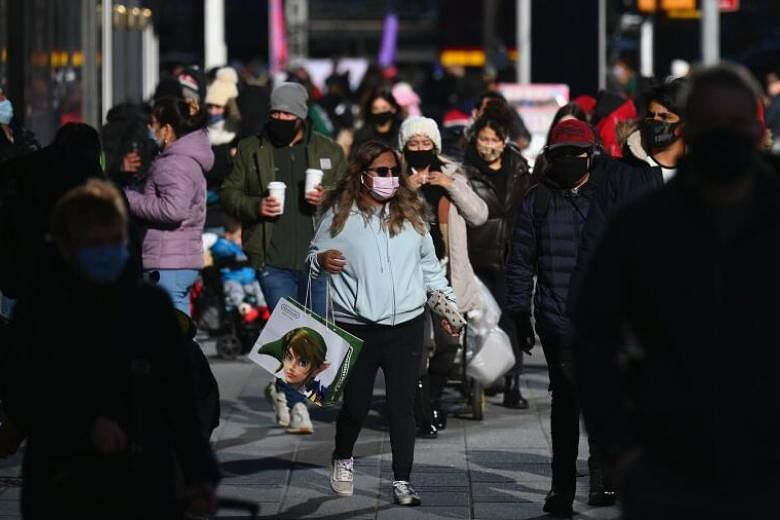NEW YORK (BLOOMBERG) - US life expectancy plunged by a full year in the first half of 2020, the biggest drop since World War II, as the Covid-19 pandemic ravaged the country.
Life expectancy at birth dropped to 77.8 years from 78.8 in 2019, according to provisional data from the National Center for Health Statistics (NCHS). The report also showed widening disparities along racial and gender lines. Black men saw a three-year decline in life expectancy, while the gap between the sexes rose to 5.4 years, the most in more than two decades.
The figures capture the impact of a pandemic that's been directly responsible for almost half a million American deaths. A recent research paper found that the overall toll might be even higher once indirect effects are taken into account, including people who died because they delayed seeking treatment for other conditions.
Life expectancy in America had already shown signs of stalling in the years before the coronavirus, after rising steadily for most of the period since World War II. Possible explanations include higher suicide rates and a surge in drug-related deaths as opioid abuse spread - and there are signs that the pandemic could be making both those problems worse.
In 2020, some long-term trends in mortality went into reverse. Racial differences had been steadily narrowing since the early 1990s. But last year, life expectancy for black Americans fell to 72 years, and the gap with their white counterparts rose to six years - the most since 1998.
The study also found a growing gap between men - whose life expectancy fell to 75.1 years from 76.3 - and women, who experienced a slightly smaller drop to 80.5 years from 81.4. By the age of 85, the gender gap in life expectancy shrinks to about six months.
The NCHS cautions that its figures are based on provisional death counts in the first half of the year, so they won't capture the full effects of the pandemic and aren't adjusted for seasonal patterns that typically see more deaths in winter months than summer.

